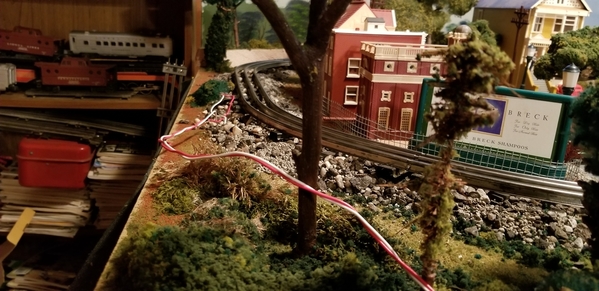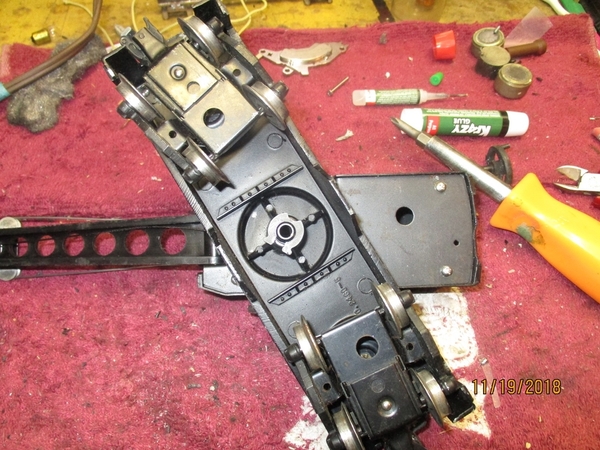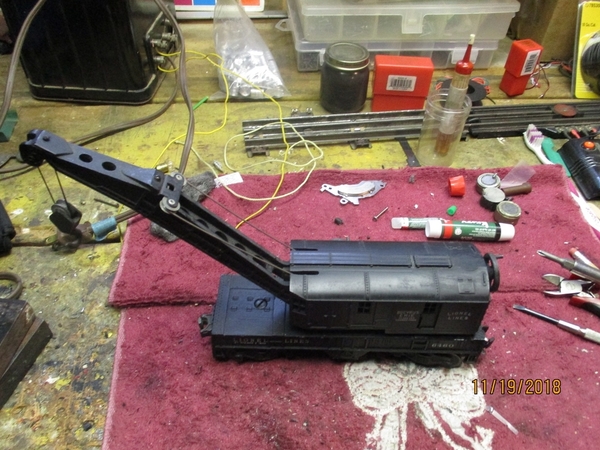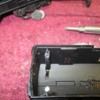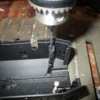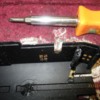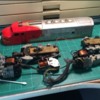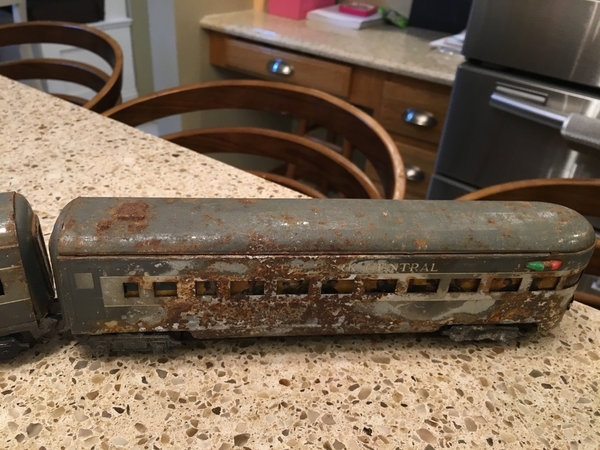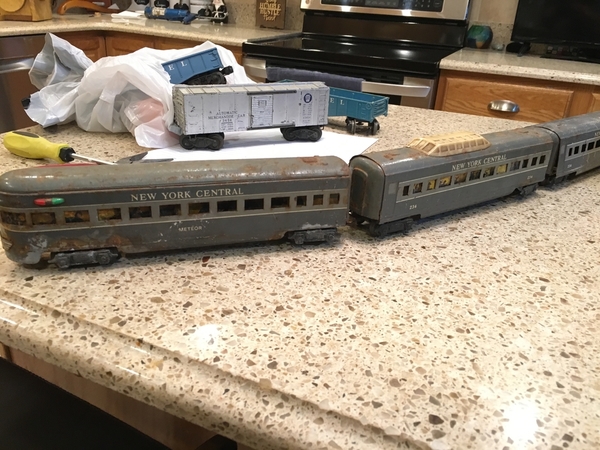I have been posting on the "Buy anything cool lately" thread about my experiences resurrecting the American Flyer 312 I bought at a train show on Nov. 4, so I won't bother repeating all that here. But I can report on my current progress.
With the reverse unit installed in the tender, I have turned my attention to my least-favorite part of restoration: painting. I put a coat of Krylon Flat Black on the tender, though it's actually more like Semigloss than flat. Then I tried to put a "Pennsylvania" dry transfer on it before sealing the whole thing with clear flat finish. Unfortunately, it seems that my PRR transfer sheet -- which is pretty old -- has dried out, because the lettering won't stick to the tender at all. I'm going to have to send for some new transfers. And yes, I know I could use decals, but I don't like decals and have always used dry transfers in the past and that's what I prefer, so I'm going to stick with them (no pun intended).
The locomotive boiler shell itself doesn't need repainting, except for a couple of tiny spots near the rear of the cab that can easily be touched up with a fine brush. So the only remaining painting to do is the PRR keystone on the boiler front. My eyes aren't what they used to be, so I've been doing it with a jeweler's loupe. I finished the red background last night, and will probably do the yellow edging tonight, if I have time.
When the Flyer shoulder screw arrives from The Train Tender, I'll attach the NOS trailing truck that I got from eBay last week to the locomotive frame. Then I'll wire in the LED headlight and put it all back together (I've already cleaned and polished the rods and valve gear).
Meantime, I'll be ordering some MV lenses for the marker lights on locomotive and tender.
I'm waiting till I get the locomotive reassembled to take any more photos, but here are a couple I took in the early stages of restoration. This is the tender, just after I installed the reverse unit (the previous owner had ripped the original unit out):
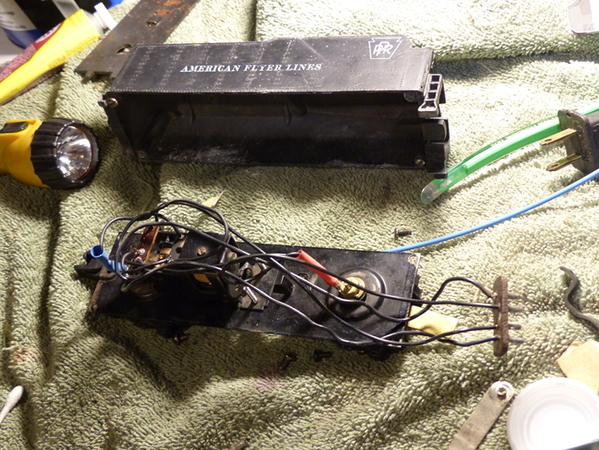
I know the wiring looks pretty sloppy, but I wanted to be sure everything was long enough to reach the locomotive when I put the tender shell back on.
This is the rest of the 312, sitting on a DVD shelf in my basement, waiting for attention. At this point, I hadn't yet done anything to it, though you can see the new trailing truck sitting just behind the cab:
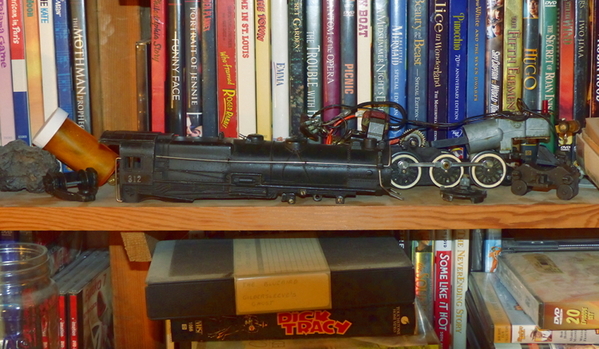
If this thread survives that long, I'll post updates to this project here.






